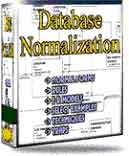 |
|||||||||||||||||
|
|
SQL Server Hardware RequirementsIntroductionIn this article on SQL Server Hardware Requirements I will discuss the following two topics:
When specifying your hardware requirements always consider the following:
Minimum SQL Server Hardware Requirements The following are Microsoft's © recommendations for the minimum hardware requirements. I will discuss the different Versions and Editions in the next article. Processor: Intel® or compatible Pentium 166 MHz or higher. Memory (RAM): Enterprise Edition and Enterprise Evaluation Edition: 64 MB minimum, 128 MB or more recommended Standard Edition and Developer Edition: 64 MB minimum Personal Edition and Desktop Engine (MSDE 2000):
Disk Space: Enterprise, Enterprise Evaluation, Standard, Developer, and Personal Editions require:
Optimizing SQL Server Hardware I would recommend that for a production server that hosts your important most frequently accessed databases and for database that must have high availability that you upgrade the SQL Server hardware beyond the minimum specification in some cases to the highest specification that can produce. This will help to prevent bottlenecks and poor system performance. Processor: I would recommend that you "scale up" your server's processor and in some cases also "Scale out." By "Scaling Up" to faster processors SQL Server will process queries faster. This will result in your end users seeing an improvement in performance. Also it may be necessary to "scale out" your processors. According to Microsoft © SQL Server can support up to 32 processors on Symmetrical Multiprocessing (SMP) computers running on Windows 2000 Data Centre Server. Scaling out multiple processors may improve fault tolerance and maybe necessary for some very large databases. Disk Drives and Disk Space When planning your SQL Server Hardware Requirements it is important to remember that database applications can extremely Input/Output intensive. Most senior SQL Server DBA’s would recommend using fast SCSI drives and quality disk controllers (or if you have no budgetary restrictions a SAN environment). As an important note when using write caching disk controllers, I recommend that you confirm with the manufacturer before implementation that they are suitable for use with Database Servers. Using inappropriate write caching disk controllers can result in data loss if a "catastrophic failure" occurs, as an example: loss of power. If you want redundancy and fault tolerance you should consider using RAID. To quote from Microsoft "The different Levels of RAID provide varying levels of performance and fault tolerance. Hardware based RAIDS provides more performance that Operating System RAID". Some of the characteristics of RAID can be seen in the table below:
Memory An insufficient amount of RAM can cause your SQL server to continually read data from disk instead of cached memory. This will impact on query performance in most cases this impact will be significant. Having an appropriate amount of memory will allow SQL Server to process your queries more efficiently: it can hold more data in its cache. Conclusion In conclusion there are a number of factors that can have influence on your hardware requirements and it is important to remember that the above specification server is very likely to perform badly. I have yet to hear of a SQL Server that has been "over specified" in terms of hardware technology performing poorly - at least not as a result of the hardware. Return to installing SQL Server database
|
Exclusive interviews with:
Free eBookSubscribe to my newsletter and get my ebook on Entity Relationship Modeling Principles as a free gift: What visitors say...
"I just stumbled accross your site looking for some normalization theory and I have to say it is fantastic.
Read more
Testimonials
I have been in the database field for 10+ years and I have never before come across such a useful site. Thank you for taking the time to put this site together." Mike, USA |
|||||||||||||||
|
Theory & Practice DB Normalization Analysis Phase Database Keys DB Glossary Appl.Architecture Oracle DBA MySQL DBA SQL Server DBA Install Oracle Install SQL Server Proj.Management Oracle Constraint Programming Tips Database Normalization eBook: |
|||||||||||||||||
|
Copyright © www.databasedesign-resource.com /
All rights reserved. All information contained on this website is for informational purposes only. Disclaimer: www.databasedesign-resource.com does not warrant any company, product, service or any content contained herein. Return to top
The name Oracle is a trademark of Oracle Corporation. |
|||||||||||||||||